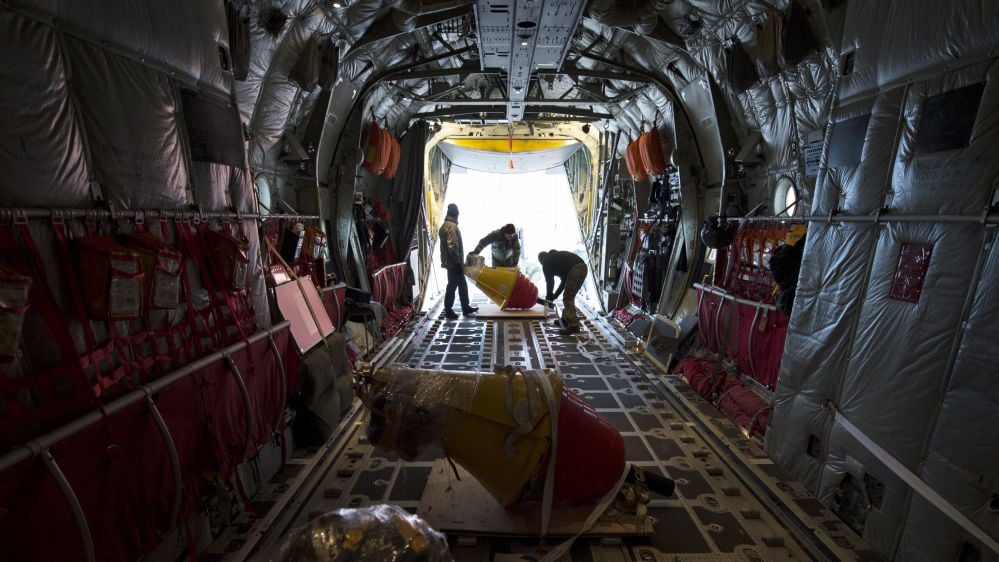U.S. Navy Air-Drops Ice Buoys for Polar Research

The U.S National Ice Center (USNIC) in coordination with the Office of Naval Research, Office of the Oceanographer of the Navy and the University of Washington recently conducted a mission to air-drop oceanographic buoys into the Arctic Ocean.
"Polar lows are like hurricanes of the north and the data collected from these buoys will help us with numerical weather prediction, which will help to keep our and our partner forces safe," said Cmdr. Ruth Lane, commanding officer of NOAA’s National Ice Center. "For example, when Hurricane Irma was approaching the Caribbean Islands. Once the hurricane was within the range of NOAA's Hurricane Hunter aircraft they flew out and dropped buoys through the hurricane. The surge of observations returned improved the track and intensity models. Forecast accuracy improves tremendously from the surge of local observations. Our goal with these Arctic buoys is a similar return on investment."
The ice-hardened buoys, known as Air Expendable Ice Beacons (AXIB), were dropped from a Royal Danish Airforce C-130 out of Thule Air Base in Greenland. The buoys will provide data for 3-5 years, and the information they transmit will be available for civilian and military purposes.
USNIC, in partnership with University of Washington, is responsible for management and coordination of the U.S Interagency Arctic Buoy Program, a conglomeration of global participants that maintain a network of drifting buoys in the Arctic Ocean. The buoy effort also provides important data to the Office of Naval Research Seasonal Ice Zone Reconnaissance Surveys (SIZRS) program, which is the core of ONR’s Arctic and Global Prediction Program.
"Unique opportunities like this are a result of relationships built under the International Cooperative Engagement Program for Polar Research," said Ninette Sadusky, senior science policy advisor, Office of the Oceanographer of the Navy. “It's important that we continue to foster partnerships and ongoing missions like the buoy program continue to thrive."
